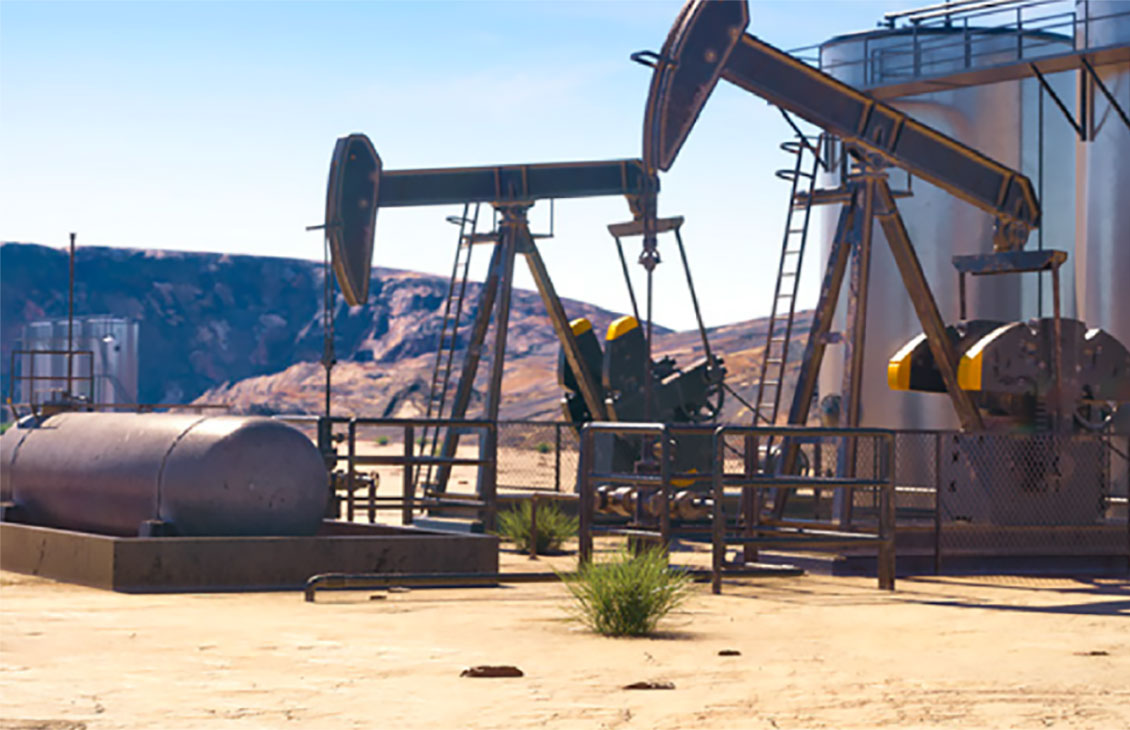How the EPA’s methane rules are pushing for transparency and accountability in 2025 and beyond
已发表: 07/23/2025

How the EPA’s methane rules are pushing for transparency and accountability in 2025 and beyond
已发表: 07/23/2025

As one of the most impactful greenhouse gases, methane emissions reduction is a key lever in our efforts to mitigate climate change and achieve a balanced energy future. This is the goal of North American methane regulation.
The US Environmental Protection Agency EPA's Greenhouse Gas Reporting Program (GHGRP) launched in 2009 and requires operators of certain industrial emissions sources to report their facilities' annual greenhouse gas (GHG) emissions. The EPA adopted the GHGRP under the Clean Air Act (CAA) and uses reported data to inform and develop regulations under the CAA. The GHGRP enables the EPA to quantify GHG emissions from different industries and sources and assess their respective emissions contributions. By making GHGRP data publicly accessible through its website, the EPA not only enforces regulatory compliance but also enhances business credibility and transparency, encouraging companies to demonstrate environmental responsibility and commitment to sustainable practices.
On May 6, 2024, the EPA finalized amendments to Subpart W of the Greenhouse Gas Reporting Program (GHGRP), with significant changes effective for the 2025 reporting year, reshaping how emissions are reported and measured. These changes emphasize transparency, accuracy, and accountability in emissions data, impacting all segments of the oil and gas industry.
Most of these provisions were effective as of January 1, 2025, for reports prepared for the 2025 reporting year and submitted by March 31, 2026. However, facilities had the option to adopt certain new calculation methodologies earlier, effective July 13, 2024 (60 days after publication in the Federal Register), allowing them to utilize these methods for the 2024 reporting year.
What are the key aspects of the EPA finalized amendments?
- Introduction of new emissions sources: To improve emissions inventory accuracy, Subpart W now requires the reporting of additional emissions sources. These sources include nitrogen removal units, produced water tanks, mud degassing, crankcase venting, and "other large release events” (over 100 kg/hr of methane). These amendments also introduce reporting requirements for industry segments with emissions sources such as blowdown vent stacks, natural gas pneumatic device venting, dehydrator vents, and acid gas removal units. Previously, these sources were only required to be reported for some, but not all, of the industry segments.
- Enhanced emissions calculation methodologies: The amendments now allow operators to utilize updated calculation methodologies, incorporating more recent studies and direct measurements for certain sources, including equipment leaks and natural gas pneumatic devices, which previously used emission factors. Additionally, it incorporates provisions that allow advanced measurement approaches, such as satellites and remote sensing to help identify and quantify large release events, quantify emissions from completions and workovers with hydraulic fracturing, and determine flare efficiency.
- Improved data verification and transparency: To bolster data verification and transparency, the EPA now mandates more granular reporting across all segments. This includes operational data and equation inputs, providing greater insight into emissions calculations. Facilities are now required to report data at the well, well-pad site, or gathering and boosting site level while continuing to roll data up to the basin level.
- Alignment with other EPA programs: This final rule allows facilities to use consistent methods to demonstrate compliance with multiple EPA programs. This reduces the burden for facilities with affected sources under Subpart W, that are also required to comply with New Source Performance Standards (NSPS) OOOOb‡ or a state or federal plan implementing Emission Guidelines (EG) OOOOc‡.
What does this mean for oil and gas operators?
Oil and gas operators must adapt their monitoring, reporting, and compliance strategies to meet these new requirements. Investing in better detection technologies and robust data management systems will be key to minimizing risks and ensuring compliance with the updated Subpart W regulations. This means that operators need to:Adopt advanced measurement methods—requiring investment in new monitoring technologies for direct measurements and top-down monitoring (e.g., satellite, aircraft) for specific emission sources leading to higher operational expenses. Operators need to improve emissions tracking systems and adopt new leak detection and repair (LDAR) programs.
Expand reporting—operators must report data and emissions:
- From newly included sources, such as large release events (e.g., blowouts, super-emitter events), equipment leaks with direct measurement options, emissions from previously excluded processes.
- At a more granular level, separate reporting for well sites, compressor stations, and gathering facilities instead of aggregated data as before.
- For more facilities that now fall under mandatory reporting due to revised applicability criteria.
Enhance transparency and verification—operators must retain detailed records, as supporting documentation for audits or compliance reviews, and meet more stringent data validation requirements.
Manage regulatory complexity—operators face increased regulatory complexity and administrative compliance if they operate under multiple EPA rules.
It is important for operators to ensure they have a robust emissions inventory verification and reconciliation process and are prepared to accommodate more measurement and field efforts.

Costs
The EPA estimates that implementation of the amendments to Subpart W will result in total costs to the oil and gas industry of over USD183M annually for the reporting years from 2025 through 2027, with average incremental labor costs of USD 55,100 per year for each person or entity affected by the new rule.
What is the Methane Super Emitter Program?
The US EPA’s Methane Super Emitter Program is an initiative designed to rapidly identify and mitigate large methane emissions from oil and natural gas facilities. The program aims to leverage advanced detection technologies and third-party expertise to address these substantial emission events promptly. Some of the key components of the Methane Super Emitter Program are:
Super emitter event: A super emitter event is characterized by methane emissions at or exceeding 100 kilograms per hour, originating from or near an oil and natural gas facility. This can include individual well sites, centralized production facilities, natural gas processing plants, or compressor stations.
Detection and notification process: Upon identifying a potential super emitter event, certified third parties are required to submit detailed notifications to the EPA within 15 calendar days of detection. The EPA reviews these submissions for completeness and accuracy before notifying the respective facility owners or operators. Subsequently, the EPA posts the notification, excluding owner/operator attribution, on its Methane Super Emitter Program webpage to maintain transparency.
Third-party certification: Entities interested in participating must obtain EPA certification to act as third-party notifiers. These certified third parties utilize EPA-approved remote-sensing technologies—including satellites, aerial sensing equipment (e.g., drones, fixed-wing aircraft, helicopters), and mobile monitoring platforms—to detect significant methane releases.
Owner/operator responsibilities: Once notified by the EPA, facility owners or operators are mandated to:
- Investigate: Initiate an investigation within 5 calendar days to determine the source and cause of the emissions.
- Report: Submit a detailed report of the investigation findings to the EPA within 15 calendar days of the notification.
- Mitigate: Implement corrective actions, if necessary, to address and rectify the identified emissions.
Public transparency: The program emphasizes public accessibility by making notifications and responses available through the EPA's Methane Super Emitter Program Portal. Initially, notifications are published without attributing them to specific owners or operators, allowing entities to respond before any public association is made.
Methane regulation is not just a regulatory necessity but a pivotal step towards a more sustainable future. By ensuring timely compliance and promoting transparency, organizations can enhance their credibility and reputation in the market. As we move forward, the commitment to reducing methane emissions will play a crucial role in the energy transition and efforts to mitigating climate change.
†OOOOb—this part of the EPA's rule issued under the Clean Air Act (CAA) New Source Performance Standards (NSPS), it is a regulation targeting GHG and VOC emissions from new, modified, or reconstructed (post-December 2022) oil and gas facilities. Effective from early 2024 and applying to wells and facilities constructed after December 6, 2022, it requires enhanced leak monitoring, strict performance standards for equipment, and detailed reporting to reduce emissions. It also includes flaring efficiency requirements and provides a two-year transition period for compliance. OOOOb aims to ensure new and updated facilities meet modern environmental standards.
†OOOOc— Also known as subpart OOOOc, this is an EPA regulation under the CAA focusing on the reduction of methane emissions from existing oil and gas facilities, developed before December 2022. States must develop plans to set performance standards for older facilities, with the EPA stepping in if there is a failure to comply. It emphasizes inspections, maintenance, and upgrades to prevent methane leaks, ensuring existing facilities align with efforts to lower emissions across the industry.

As Sustainability Product Champion for Emissions Management within the SLB Digital Sustainability portfolio, Abbi Hassan leads the development of strategic product capabilities, that enable high-integrity, auditable greenhouse gas (GHG) inventories, measurement-informed methane quantification, and bottom-up/top-down emissions reconciliation. He works cross-functionally to deliver solutions that support robust emissions monitoring, regulatory reporting, and operational transparency.
With over 20 years of experience in digital technology innovation, GHG accounting, and methane management, Abbi brings deep expertise in regulatory compliance, stakeholder engagement, and environmental, social, and governance (ESG) strategy execution. His work focuses on translating complex emissions requirements into scalable, actionable solutions that empower customers to achieve their decarbonization and sustainability objectives.
